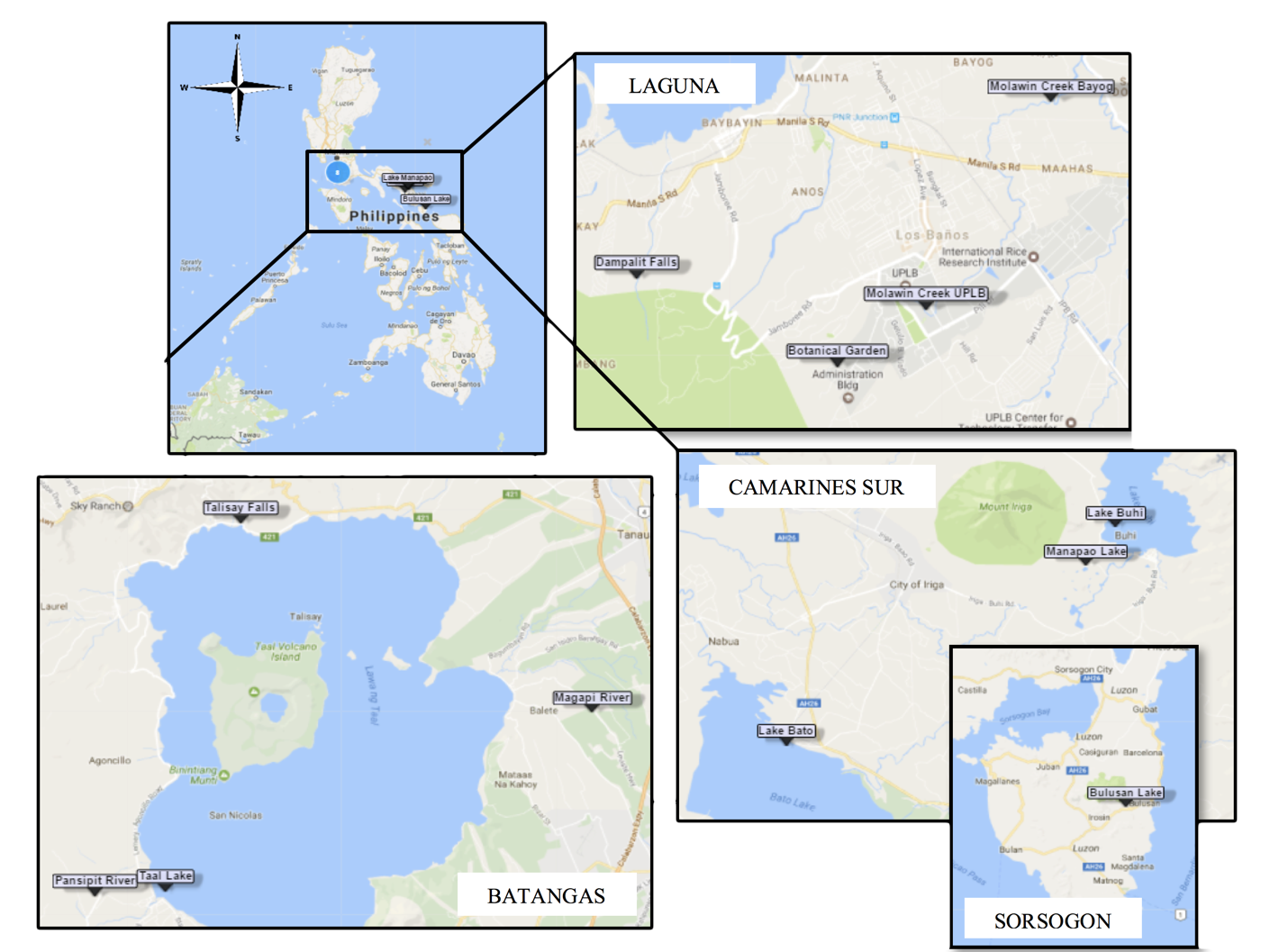VOLUME 10 NUMBER 1 (January to June 2017)

Philipp. Sci. Lett. 2017 10 (1) 58-71
available online: June 30, 2017
*Corresponding author
Email Address: rmalcabedos@up.edu.ph
Received: October 19, 2016
Revised: May 17, 2017
Accepted: June 01, 2017
ARTICLE
Genetic diversity within and among natural populations of five gobies based on cytogenetic and isozyme analyses
2Animal Biology Division, Institute of Biological Sciences, College of Arts and Sciences, University of the Philippines Los Baños, Philippines
Cytogenetic profiles of five native freshwater gobies from Southern Luzon, Philippines namely, Glossogobius celebius (Velenciennes, 1837), Glossogobius giuris (Hamilton, 1822), Redigobius bikolanus (Herre, 1927), Redigobius dispar (Peters, 1868), and Giuris margaritacea (Valenciennes, 1837) were studied by using basic cytogenetic analysis. G. celebius chromosomes are all telocentric, with a diploid chromosome number of 2n = 50 (FN = 50). Both G. margaritacea and G. giuris have telocentric chromosomes, diploid chromosome number of 2n = 46, and FN = 46. R. bikolanus and R. dispar both have metacentric (m), submetacentric (sm), and telocentric (t) chromosomes although they have different diploid numbers: R. bikolanus has 2n = 40 (10m + 28sm + 2t, FN = 78) while R. dispar has a modal chromosome number of 2n = 44 (24m + 16 sm + 4t, FN = 84). Based on the computed relative lengths of the chromosomes, G. celebius, and R. bikolanus have slightly asymmetrical karyotypes, while G. giuris and R. dispar have symmetrical karyotypes. Cytotaxonomically, the results suggest that G. celebius and R. dispar might be more ancestral than G. giuris and R. bikolanus, respectively. Genetic variation within and among populations was also analyzed by isozyme electrophoresis using seven enzymes and two proteins. Percent (%) polymorphism (20.00–64.71), heterozygosity (0.05–0.50), and average number of alleles (1.23–1.65) indicating high variation of the individuals within the population, were observed among individuals of G. celebius from Social Garden Molawin Creek, G. giuris from Lake Bato, R. dispar from Bulusan Lake, and R. bikolanus and Giuris margaritacea from Pansipit River. The dendrogram based on estimates of genetic identity (0.77– 0.86) and distance (0.15–0.26) showed that G. celebius populations from Laguna, G. giuris populations from Lake Bato and Talisay, and R. dispar populations from Bulusan and Manapao Lakes, were most related.
© 2025 SciEnggJ
Philippine-American Academy of Science and Engineering